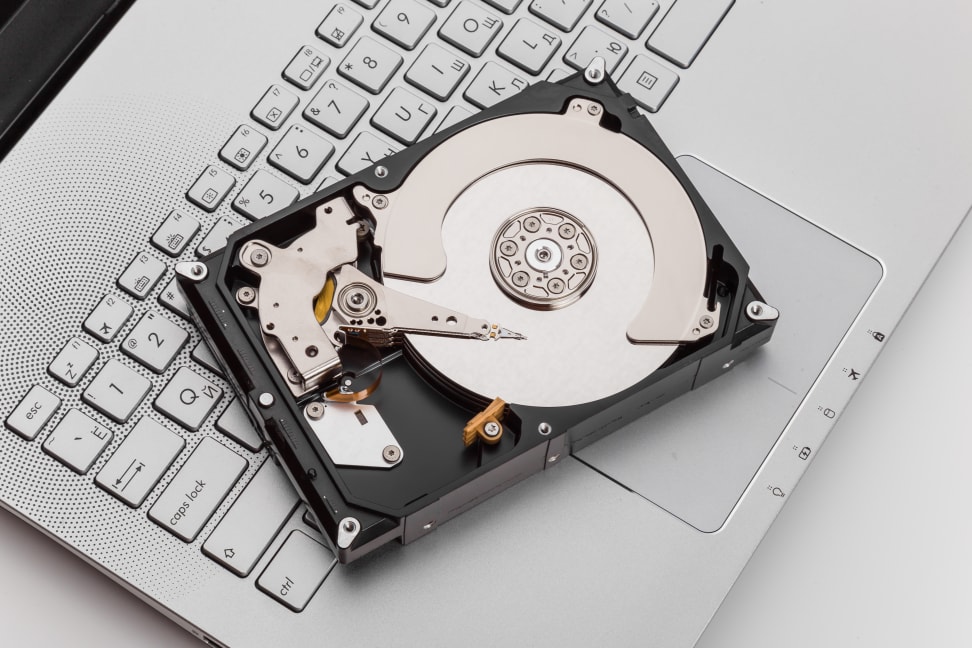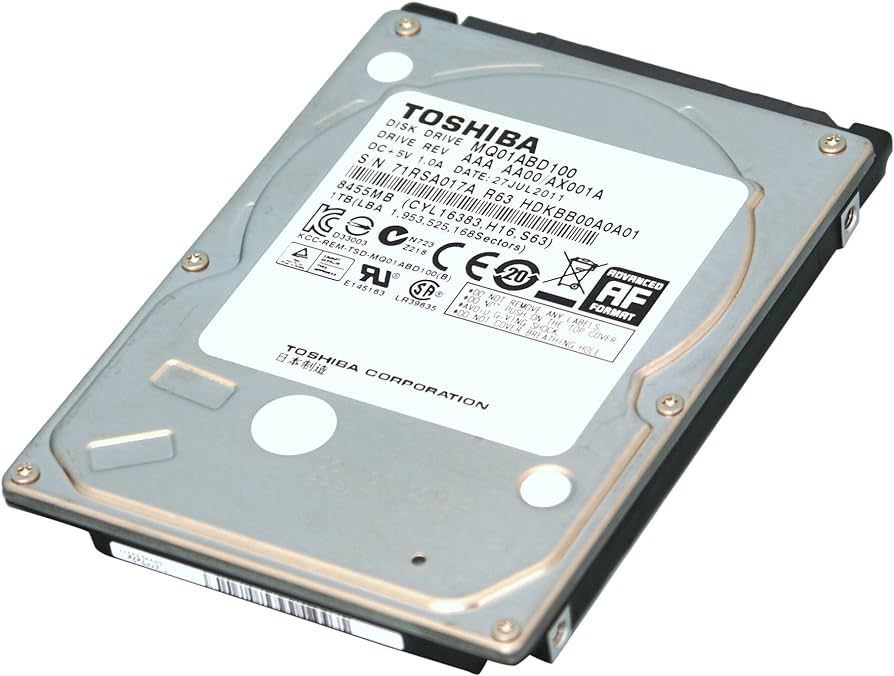A Deep Dive Into Laptops: Uncovering the Hard Drive
Introduction
As technology continues to advance, so does the need for a better understanding of our devices. One such device that goes largely misunderstood despite everyday use is the laptop. More specifically, the unsung hero of its operation - the hard drive. This article will demystify the concept of a laptop's hard drive and its relevance to the overall functioning of the laptop. Furthermore, we'll discuss maintenance tips so you can keep your laptop running optimally.
Delving into the World of Laptop Hardware: What Exactly is a Hard Drive?
When breaking down the intricate components of a laptop, you'll find a key player that plays a huge role in its functionality - the hard drive. Also known as the Hard Disk Drive (HDD), this intriguing piece of hardware is your laptop's primary storage device, holding an array of pivotal data:
- The Operating System (OS): Your laptop's hard drive is the home to its operating system, which could range from Windows to MacOS or Linux.
- Applications: Any software or application installed on your laptop resides on the hard drive - be it productivity tools like Microsoft Office, creative software like Adobe Photoshop, or utility programs like antivirus software.
- User Files: Your personal documents, files, photos, videos, music - everything you save on your laptop is stored on the hard drive.
- System Files: In addition to the OS and applications, the hard drive also contains various system files required for the smooth functioning of your laptop.
Don't mistake the simplicity of your laptop's user interface to think that everything vanishes when it's turned off. That's where the hard drive comes in - safeguarding your data consistently. Thus, understanding the concept of a hard drive is crucial for any laptop user. Even when the laptop is powered off, just remember the hard drive is still hard at work, holding onto your valuable information.
An Inside Look: What Does a Laptop's Hard Drive Look Like?
The physical appearance and structural design of a laptop's hard drive are essential to understanding its functionality. If you could unravel a laptop and peek inside its hard drive, you would notice an array of intricate components housed inside it.
Let's break down the appearance of a laptop's hard drive into three primary elements:
1. Exterior Casing: The outer shell of a laptop's hard drive is relatively compact. It's generally a small rectangular metallic box. Depending on the laptop's design, it may often be enclosed in a plastic holder for extra protection.
2. Location: The placement of a hard drive varies based on laptop model and design. However, it's typically situated on one side of the laptop, with a connective cable leading to the motherboard, serving as a critical bridge for data transfer.
3. Interior Components: If one dares to delve deeper, opening up the hard drive reveals a fascinating world within. It's a miniaturized marvel of technology and precision. The primary components include:
- Platters: The hard drive houses an array of round, metallic disks stacked in neat order, known as platters. Coated with a layer of magnetic material, these platters rotate at a high speed, forming the core of data storage operations.
- Actuator Arm: Hovering above these rotating platters is the actuator arm. This innovative piece of hardware is equipped with read/write heads that move swiftly across the platters, reading or writing data as the laptop operates.
- Read/Write Heads: The read/write heads on the actuator arm are critical to the hard drive's operation. These pieces of tech translate electrical signals into magnetic information (writing) or magnetic information into electronic signals (reading), allowing the laptop to seemlessly retrieve or store data.
By understanding the intricate design and layout of a laptop's hard drive, you'll gain more insight into how your everyday device operates. Regardless of its complex assembly and microscopic size, every component within plays a significant part in making data storage and retrieval a breeze for the end-users.
Why is the Hard Drive Crucial to Your Laptop's Functionality?
The question "Why is the laptop's hard drive so fundamental?" might cross the minds of many users. To clarify, the hard drive's role in a laptop's functionality is indispensable. Here’s a succinct summary of its importance:
- Data Storage: The primary role of a hard drive is to securely store data. From the operating system to personal files, it effectively holds all data and the absence of it would render your laptop incapable of retaining any information.
- Efficiency Effect: The performance of the hard drive has a direct link with the laptop’s efficiency. Speedy read and write times mean a smoother, faster user experience.
- Power-Up Process: Without a hard drive, booting up your laptop would be impossible. It holds the critical system files necessary for the startup process.
- Software Functionality: Every application or software installed on your computer relies on the hard drive. Remove the hard drive, and your laptop loses the ability to run any software.
To summarize, a hard drive is to a laptop what a memory chip is to the human brain. It retains all information, helps process tasks, and fundamentally enables operations to function smoothly. Consequently, a healthy hard drive ensures an optimal laptop performance.
How Can You Identify Your Laptop's Hard Drive and Maintain Its Health?
Locating and maintaining the overall health of your laptop’s hard drive can significantly extend its longevity and enhance its performance. Here’s a simple guide:
Locating Your Hard Drive:
- Your laptop’s hard drive is often nestled on the side or at the bottom of your machine, within an easily accessible compartment. However, some models might require you to cautiously open the back panel to locate the hard drive.
Steps to Maintain Hard Drive Health:
Staying proactive about your hard drive's health can prevent costly repairs or data loss down the line. Here's how:
1. Regular Data Backup: Always backup valuable data often. This ensures that important information is not lost in case of a hard drive failure.
2. Disk Cleanup: Perform regular disk cleanups to remove unnecessary files which might be slowing down your hard drive. Go by the adage, "A clean disk is a happy disk."
3. Defragmentation: Only for HDDs, defragmenting your drive can optimise your hard drive's efficiency. But remember, SSDs should not be defragmented.
4. Disk Check for Errors: Run disk error-checking tools regularly to spot potential problems before they worsen.
5. Install Reliable Antivirus Software: A quality antivirus software can protect your hard drive from malware that could damage your data or your device.
Remember, a well-maintained hard drive keeps your laptop running smoothly and efficiently, providing an optimal user experience.
Understanding the Evolution: From Traditional Hard Drives to Solid State Drives
The rapid advancement in technology has introduced strong competitors to traditional hard drives, particularly Solid State Drives (SSDs). These digital storage solutions provide an impressive array of benefits, directly influencing the performance and operational efficiency of laptops.
SSDs Vs HDDs: A Quick Comparison:
- Moving Parts: Unlike HDDs which rely on a rotating disk and moving read/write head, SSDs contain no moving parts, reducing the likelihood of failure due to mechanical issues.
- Data Access Times: SSDs offer significantly faster data access times as compared to HDDs, directly improving boot time, file transfer rates, and overall system efficiency.
- Noise Level: SSDs are famously silent during operation, while traditional HDDs can often be recognized by the humming and occasional buzzing sounds.

- Durability: The lack of delicate moving parts makes SSDs more resistant to physical shocks, offering additional durability for laptops on the go.
- Price: Even with all the benefits, SSDs do come at a cost. HDDs currently hold a cost-per-gigabyte advantage, making them a more economical choice for users requiring extensive storage. For instance, a 1TB HDD can cost around $40-$50, while the same capacity SSD can cost upwards of $100.
So, while the likes of SSDs have emerged with substantial improvements, their increased costs keep traditional hard drives alive in the tech market, particularly in affordable and mid-range laptops. The balance between cost and performance is a determining factor for the type of hard drive a laptop chooses to employ.

In conclusion, understanding the evolution of laptop hard drives offers a clear perspective on the storage technology's progression and gives users an idea of the best choice suited to their needs.
Conclusion
Understanding your laptop’s hard drive can aid in its maintenance while improving overall performance and longevity. From its design to its crucial role, the hard drive, regardless of its evolution to SSDs, form the nucleus of your laptop's data management. By taking care of it, you’re essentially safeguarding your valuable data and smoothing your digital experience.
Related FAQs about what does a hard drive look like in a laptop
What is the difference between a hard drive and a solid state drive?
The primary difference between a hard drive (HDD) and a solid state drive (SSD) lies in their design and speed. HDDs are mechanical and store data on a metal platter with a magnetic coating, and they can be slower than SSDs. SSDs, in contrast, use flash memory and have no moving parts, which makes them faster and more resistant to physical shock.
How can I tell if my laptop's hard drive is failing?
Alarming signs of a failing hard drive can include frequent freezes or crashes, excessively slow file transfers, disappearing files, or an increased number of error messages. Additionally, unusual noises such as clicking or humming from the hard drive region can signal mechanical failures. It's best to promptly back up data and consult a professional if these signs are noticed.
What are some good practices for maintaining my laptop's hard drive?
Good practices for maintaining your laptop's hard drive include regular data backups, disk cleanup to remove unnecessary files, running disk error-checking tools regularly, and installing and regularly updating trusted antivirus software. Additionally, for HDD users, defragmenting the drive periodically can optimize data storage and enhance performance.


